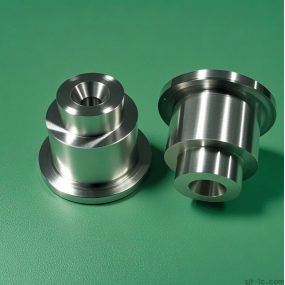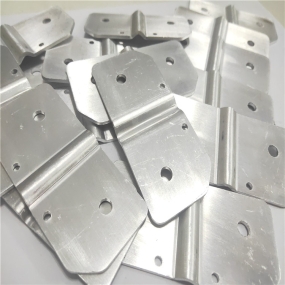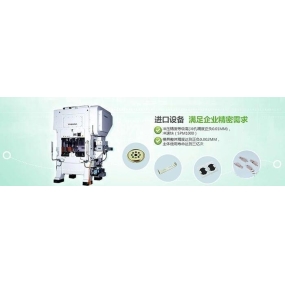Sheet metal shell is a common external protective structure for products, which is widely used in various fields such as electronics, communication, automotive, transportation, etc. In actual production, the protective performance and durability of sheet metal shells are very important indicators. This article will explore how to improve the protective performance and durability of sheet metal shell processing from the aspects of material selection, manufacturing process, and surface treatment.
Firstly, the selection of materials is crucial for improving the protective performance and durability of sheet metal shells. When choosing sheet metal shell materials, the following aspects should be considered: corrosion resistance, strength and stiffness, thermal conductivity and electrical conductivity. Firstly, considering that the shell is exposed to different environments for a long time, it is necessary for the material to have good corrosion resistance. The commonly used sheet metal shell materials currently include aluminum alloy, stainless steel, and galvanized steel plate. Among them, aluminum alloy has good corrosion resistance and lightweight advantages, suitable for most indoor application scenarios; Stainless steel has good acid and alkali corrosion resistance and is suitable for external control cabinets, navigation signs, etc. in harsh environments; Galvanized steel sheet has good corrosion resistance and is suitable for outdoor application scenarios.
Secondly, the manufacturing process also plays an important role in the protective performance and durability of sheet metal shells. Sheet Metal Processing mainly includes processes such as cutting, punching, bending, and welding. In the processes of cutting, punching, and bending, it is necessary to control the machining accuracy to ensure that the size and shape of the sheet metal shell are accurate and meet the design requirements; At the same time, appropriate welding methods should be used during the assembly welding process to ensure that the weld seam is continuous and firm, and to improve the structural strength of the shell. In addition, for some special requirements of enclosures, such as waterproof enclosures, explosion-proof enclosures, etc., corresponding processes and materials need to be used to ensure that they have waterproof, explosion-proof and other functions.
 After Z, surface treatment is also an important step in improving the protective performance and durability of sheet metal shells. Surface treatment mainly includes spraying, electroplating, anodizing, etc. Spraying is currently a common surface treatment method, which can increase the corrosion resistance, dust resistance, and water resistance of sheet metal shells. During the spraying process, attention should be paid to selecting suitable coatings, such as weather resistant and acid alkali resistant coatings suitable for external application scenarios; Anti static coatings suitable for internal application scenarios. Electroplating is a method of forming a metal film on the surface of sheet metal shells through electrochemical methods, which has the effect of increasing the conductivity and corrosion resistance of the shells. Anodizing is a process of oxidizing the surface of aluminum alloy into a hard and dense oxide film, which has the effect of improving the surface hardness and corrosion resistance of the shell.
After Z, surface treatment is also an important step in improving the protective performance and durability of sheet metal shells. Surface treatment mainly includes spraying, electroplating, anodizing, etc. Spraying is currently a common surface treatment method, which can increase the corrosion resistance, dust resistance, and water resistance of sheet metal shells. During the spraying process, attention should be paid to selecting suitable coatings, such as weather resistant and acid alkali resistant coatings suitable for external application scenarios; Anti static coatings suitable for internal application scenarios. Electroplating is a method of forming a metal film on the surface of sheet metal shells through electrochemical methods, which has the effect of increasing the conductivity and corrosion resistance of the shells. Anodizing is a process of oxidizing the surface of aluminum alloy into a hard and dense oxide film, which has the effect of improving the surface hardness and corrosion resistance of the shell.
In summary, the protective performance and durability of sheet metal shells are influenced by multiple factors, including material selection, manufacturing processes, and surface treatment. Choosing the right materials and adopting appropriate processes and surface treatment methods can effectively improve the protective performance and durability of sheet metal shells, meeting the needs of different application scenarios. Meanwhile, in practical applications, regular maintenance and upkeep should be carried out according to specific requirements to extend the service life of the sheet metal shell.


 Spanish
Spanish Arabic
Arabic French
French Portuguese
Portuguese Belarusian
Belarusian Japanese
Japanese Russian
Russian Malay
Malay Icelandic
Icelandic Bulgarian
Bulgarian Azerbaijani
Azerbaijani Estonian
Estonian Irish
Irish Polish
Polish Persian
Persian Boolean
Boolean Danish
Danish German
German Filipino
Filipino Finnish
Finnish Korean
Korean Dutch
Dutch Galician
Galician Catalan
Catalan Czech
Czech Croatian
Croatian Latin
Latin Latvian
Latvian Romanian
Romanian Maltese
Maltese Macedonian
Macedonian Norwegian
Norwegian Swedish
Swedish Serbian
Serbian Slovak
Slovak Slovenian
Slovenian Swahili
Swahili Thai
Thai Turkish
Turkish Welsh
Welsh Urdu
Urdu Ukrainian
Ukrainian Greek
Greek Hungarian
Hungarian Italian
Italian Yiddish
Yiddish Indonesian
Indonesian Vietnamese
Vietnamese Haitian Creole
Haitian Creole Spanish Basque
Spanish Basque











